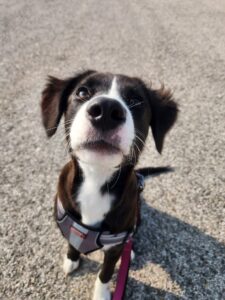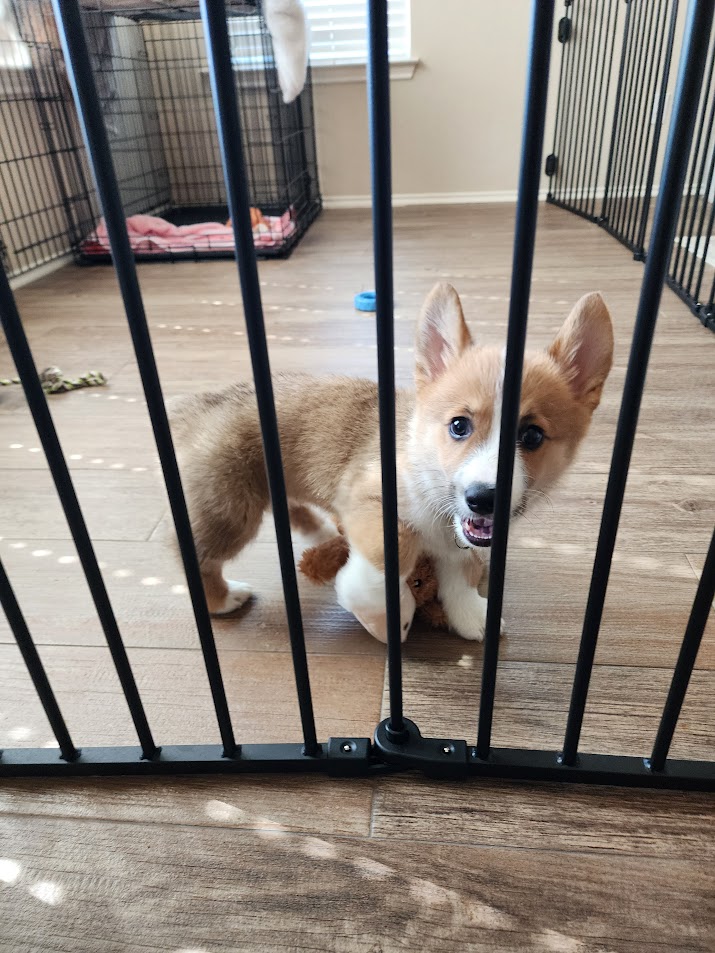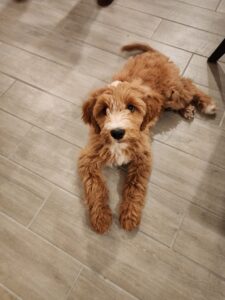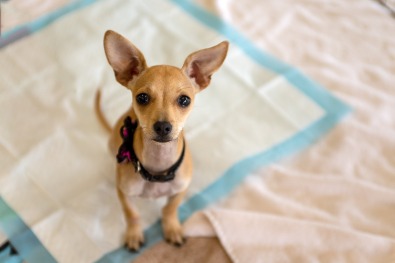Welcoming a new puppy into your home is a joyous occasion, but it also comes with its own set of challenges. One of the most important aspects of raising a well-behaved and happy dog is successful potty training. With patience, consistency, and potty parties, you can make this process smoother for both you and your puppy. Here’s a step-by-step guide to help you get started!
Understanding Your Puppy’s Needs

Before diving into the potty training process, it’s crucial to understand your puppy’s natural behaviors and needs. Puppies have small bladders and may need to relieve themselves frequently. Generally, a puppy can hold their bladder for about one hour for every month of age. For example, a three-month-old puppy may need to go out every three hours. Though it is good practice with any new puppy that you begin with taking them outside every single hour and slowly increase the time in between every couple of successful weeks of no accidents. Know that your puppy may need more time and others and that is okay!
Choosing a Potty Spot
Select a specific spot in your yard or nearby where you want your puppy to go. The consistency of returning to the same spot helps your puppy associate it with going potty. Use a specific cue like “Go potty” so they can learn to associate the cue with the action then immediately reward with a treat and play time!
Depending on your schedule and living situation, you may need both an indoor and outdoor potty solution. Consistency is key! Always take your puppy to the same spot to reinforce the behavior. Remember, potty first, then treat and play as a reward!
-
Outdoor Potty Spot:
Choose a specific spot in your yard and always take your puppy there to potty. This helps them associate that area with their bathroom duties.If your puppy prefers to play or gets distracted outside, you take them there on-leash then once they potty, treat, and let them off-leash for play time. This can help associate pottying first that means play will happen next!
-
Indoor Potty Spot:
If you live in an apartment or have limited outdoor access, consider using grass patches, bark potty or turf patches indoors. These mimic the outdoor environment and make the transition to outdoor pottying easier later on.
Supervision and Confinement
Supervising your puppy is another important step for potty training. If you aren’t watching, you won’t know if your puppy snuck off to potty in the home or is otherwise doing other unsafe puppy shenanigans. When you cannot directly supervise your puppy, it is recommended you use confinement to prevent accidents.
- Crate: A crate is perfect for short periods. Puppies naturally avoid soiling their sleeping area, which helps teach them to hold their bladder. Crate training can be particularly effective because dogs naturally avoid soiling their sleeping area. Ensure the crate is the right size—large enough for your puppy to stand, turn around, and lie down but not so large that they can use one corner as a bathroom.
- Playpens: For longer periods away, use a playpen or exercise pen with the crate inside. This gives your puppy room to move, play, and sleep while still having a designated potty area using a grass patch, bark potty, or turf patch.

Setting Up a Routine
Creating a consistent routine is key to successful potty training. Puppies thrive on routine, and regular potty breaks will help them understand when and where they should go. It is also important to reward your puppy every time they potty outside and do not immediately take them in but instead, play with them for a bit first after pottying. Some good routines to remember; take your puppy out:
- First thing in the morning
- After meals
- After waking up from naps
- After playtime
- Before bedtime
Here’s the magic formula for a potty schedule: potty, treat, play, rest, repeat. Supervise your puppy 100% of the time when they are not in a playpen or crate . Your goal is to prevent accidents and reinforce good habits.
A sample schedule might look like this:
- 6:00 AM – Potty (Throw a party for pottying outside!)
- 6:15 AM – Feed puppy
- 6:35 AM – Potty (Party time!)
- 7:00-8:00 AM – Rest in playpen or crate
- 8:00 AM – Potty (Party time!)
- 9:00 AM – Rest in playpen or kennel
- 10:00 AM – Potty (Party time!)
- 11:00 AM – Lunch
- 11:15 AM – Potty (Party time!)
- 12:15 PM – Potty (Party time!)
- 12:45 PM – Potty (Party time!)
- 1:00 PM – Rest in playpen or crate
- 2:00 PM – Potty (Party time!)
- 3:00 PM – Potty (Party time!)
- 4:00 PM – Rest in playpen or crate
- 5:00 PM – Potty (Party time!)
- 6:00 PM – Dinner
- 6:15 PM – Potty (Party time!)
- 7:00 PM – Potty (Party time!)
- 8:00 PM – Potty (Party time!)
- 9:30 PM – Potty (Party time!)
- 10:00 PM – Bedtime
If your puppy doesn’t go potty during a scheduled break, don’t worry! To prevent accidents, place your puppy back in a playpen or crate with a treat. Try again in 10-15 minutes. When your puppy finally goes potty, celebrate with a party! This consistent management and scheduling will help prevent accidents and build bladder control.
This schedule is just to give you an idea of a routine and will vary depending on your puppy’s water intake, age, and size. Smaller breeds generally need to go potty more frequently than medium or large breeds. Adjust the schedule to fit your puppy’s needs and your lifestyle.
Handling Accidents
Accidents are inevitable during the potty training process. Dogs are not born knowing our human rules so we must understand and guide them. It’s important not to punish your puppy for accidents, as this will make your puppy feel unsafe to potty in front of you. If your puppy does go somewhere you don’t want them to, don’t worry, just calmly take them to where they are supposed to go then, clean up accidents thoroughly with an enzymatic cleaner to remove any lingering scent that might attract your puppy back to the same spot.
Recognizing Signs
Understand that puppies will not always be able to tell you when they need to go. Learn to recognize the signs that your puppy needs to go potty. Common signs include sniffing the ground, circling, whining, heading towards the door, increasing mouthing/biting. When you notice these signs, take your puppy outside immediately.
Patience and Consistency
Potty training takes time, and every puppy learns at their own pace and builds bladder control at different ages as well. Be patient and consistent with your training methods. Celebrate small victories along the way and stay committed to the process.

Troubleshooting Common Issues
- Regression: It’s normal for puppies to have setbacks. Revisit the basics and maintain a consistent routine.
- Nervous or Excitement Urination: Some puppies may urinate when they are excited or nervous. This usually resolves as they grow older and gain confidence. Avoid over-stimulating your puppy during greetings and approach them calmly. If they are not growing out of it, make sure to talk to a certified professional dog trainer.
- If your puppy has not pottied and you know they need to go, either put them back in their crate or playpen, or keep them on-leash to supervise them before taking them back outside in about 10-15 minutes to try again. Freedom can only happen when they potty outside.
Final Thoughts
Potty training can be a frustrating experience for both you and your puppy but it doesn’t have to be! With consistency, patience, and plenty of potty parties, you’ll set your puppy up for success and build a strong foundation for good habits. Happy potty training!





